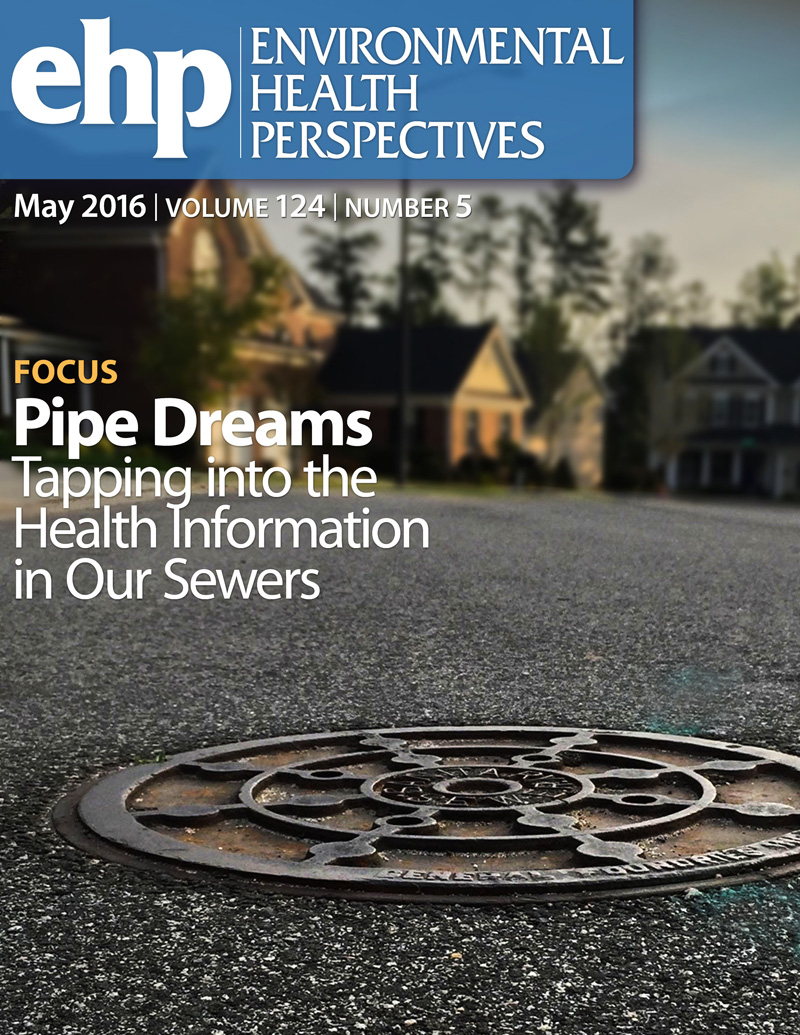绝经前妇女体内的 PFAS 水平、早期生活因素和乳房 X 线照相术乳腺密度。
IF 10.1
1区 环境科学与生态学
Q1 ENVIRONMENTAL SCIENCES
引用次数: 0
摘要
背景乳腺密度(MBD)是乳腺癌的一个重要风险因素和中间表型,但有关环境污染物与 MBD 关系的研究却很有限。目的我们研究了全氟辛烷磺酸(PFOS)、全氟辛酸(PFOA)和全氟己烷磺酸(PFHxS)水平与 MBD 测量值之间的关系,并评估了早期生活因素是否会改变这些关系。方法Metabolon 使用超高效液相色谱/串联精确质谱对密苏里州圣路易斯市 705 名完成年度乳房 X 光筛查的绝经前妇女的空腹血液进行了代谢组学分析。我们通过多变量线性回归模型计算了乳房X线照片体积密度百分比 (VPD)、致密体积 (DV) 和非致密体积 (NDV) 的最小平方均值(LSM),这些均值按 PFOS、PFOA 和 PFHxS 的四分位数 (Q) 进行了总体分层,并按招募时间、种族、初潮年龄和 10 岁时的体型进行了分层。根据年龄、月经初潮年龄、体脂百分比、种族、乳腺癌家族史、口服避孕药使用情况、饮酒量、初产妇/初生年龄以及 10 岁时的体型对模型进行了调整。结果PFOS、PFOA 和 PFHxS 与 VPD 或 NDV 无显著相关性。PFHxS 与 DV 呈显著正相关(Q1=67.64 cm3,Q2=69.91 cm3,Q3=69.06 cm3,Q4=75.79 cm3;P-趋势=0.03)。全氟辛烷磺酸与 DV 呈正相关(Q1=65.45 立方厘米,Q2=70.74 立方厘米,Q3=73.31 立方厘米,Q4=73.52 立方厘米;p-趋势=0.06),与 Q1 相比,Q2、Q3 和 Q4 的 DV 分别高 8.1%、12% 和 12.3%。在 10 岁时体重不足/体重正常的女性中,全氟辛烷磺酸与 VPD 呈正相关(Q1=9.02%,Q2=9.11%,Q3=9.48%,Q4=9.92%;P-趋势=0.04),而在 10 岁时超重/肥胖的女性中,全氟辛烷磺酸与 VPD 呈反相关(Q1=7.46%, Q2=6.94%, Q3=6.78%, Q4=5.47%; p-trend=0.005) (p-interaction=0.04).PFOS、PFOA和PFHxS与VPD和NDV无关。此外,10 岁时的体型可能会改变 PFOS 与 MBD 的关系。还需要进一步的研究来验证我们的发现,并评估其他全氟和多氟烷基物质(PFAS)以及 PFAS 混合物与 MBD 的关系。https://doi.org/10.1289/EHP14065。本文章由计算机程序翻译,如有差异,请以英文原文为准。
PFAS Levels, Early Life Factors, and Mammographic Breast Density in Premenopausal Women.
BACKGROUND
Mammographic breast density (MBD) is a strong risk factor and an intermediate phenotype for breast cancer, yet there are limited studies on how environmental pollutants are associated with MBD.
OBJECTIVE
We investigated associations of perfluorooctane sulfonate (PFOS), perfluorooctanoic acid (PFOA), and perfluorohexane sulfonate (PFHxS) levels with measures of MBD and evaluated if early life factors modified any associations.
METHODS
Metabolon performed metabolomics analysis using ultrahigh-performance liquid chromatography/tandem accurate mass spectrometry in fasting blood from 705 premenopausal women completing their annual screening mammogram in St. Louis, Missouri. We calculated least square means (LSM) of mammographic volumetric percent density (VPD), dense volume (DV), and nondense volume (NDV) by quartiles (Q) of PFOS, PFOA, and PFHxS from multivariable linear regression modeling overall and stratified by recruitment period, race, age at menarche, and body shape at age 10. Models were adjusted for age, age at menarche, body fat percentage, race, family history of breast cancer, oral contraceptive use, alcohol consumption, parity/age at first birth, and body shape at age 10.
RESULTS
PFOS, PFOA, and PFHxS were not significantly associated with VPD or NDV. PFHxS was significantly positively associated with DV (Q1=67.64 cm3, Q2=69.91 cm3, Q3=69.06 cm3, Q4=75.79 cm3; p-trend=0.03). PFOS was positively associated with DV (Q1=65.45 cm3, Q2=70.74 cm3, Q3=73.31 cm3, Q4=73.52 cm3; p-trend=0.06) with DV being 8.1%, 12%, and 12.3% higher in Q2, Q3, and Q4 compared to Q1. Among women who were underweight/normal weight at age 10, PFOS was positively associated with VPD (Q1=9.02%, Q2=9.11%, Q3=9.48%, Q4=9.92%; p-trend=0.04) while there was an inverse association among women who were overweight/obese at age 10 (Q1=7.46%, Q2=6.94%, Q3=6.78%, Q4=5.47%; p-trend=0.005) (p-interaction=0.04).
DISCUSSION
We report novel associations of PFHxS and PFOS with DV in premenopausal women. PFOS, PFOA, and PFHxS were not associated with VPD and NDV. In addition, body shape at age 10 may modify the associations of PFOS with MBD. Further studies are needed to validate our findings and to evaluate the associations of other per- and polyfluoroalkyl substances (PFAS), as well as mixtures of PFAS, with MBD. https://doi.org/10.1289/EHP14065.
求助全文
通过发布文献求助,成功后即可免费获取论文全文。
去求助
来源期刊

Environmental Health Perspectives
环境科学-公共卫生、环境卫生与职业卫生
CiteScore
14.40
自引率
2.90%
发文量
388
审稿时长
6 months
期刊介绍:
Environmental Health Perspectives (EHP) is a monthly peer-reviewed journal supported by the National Institute of Environmental Health Sciences, part of the National Institutes of Health under the U.S. Department of Health and Human Services. Its mission is to facilitate discussions on the connections between the environment and human health by publishing top-notch research and news. EHP ranks third in Public, Environmental, and Occupational Health, fourth in Toxicology, and fifth in Environmental Sciences.
 求助内容:
求助内容: 应助结果提醒方式:
应助结果提醒方式:


